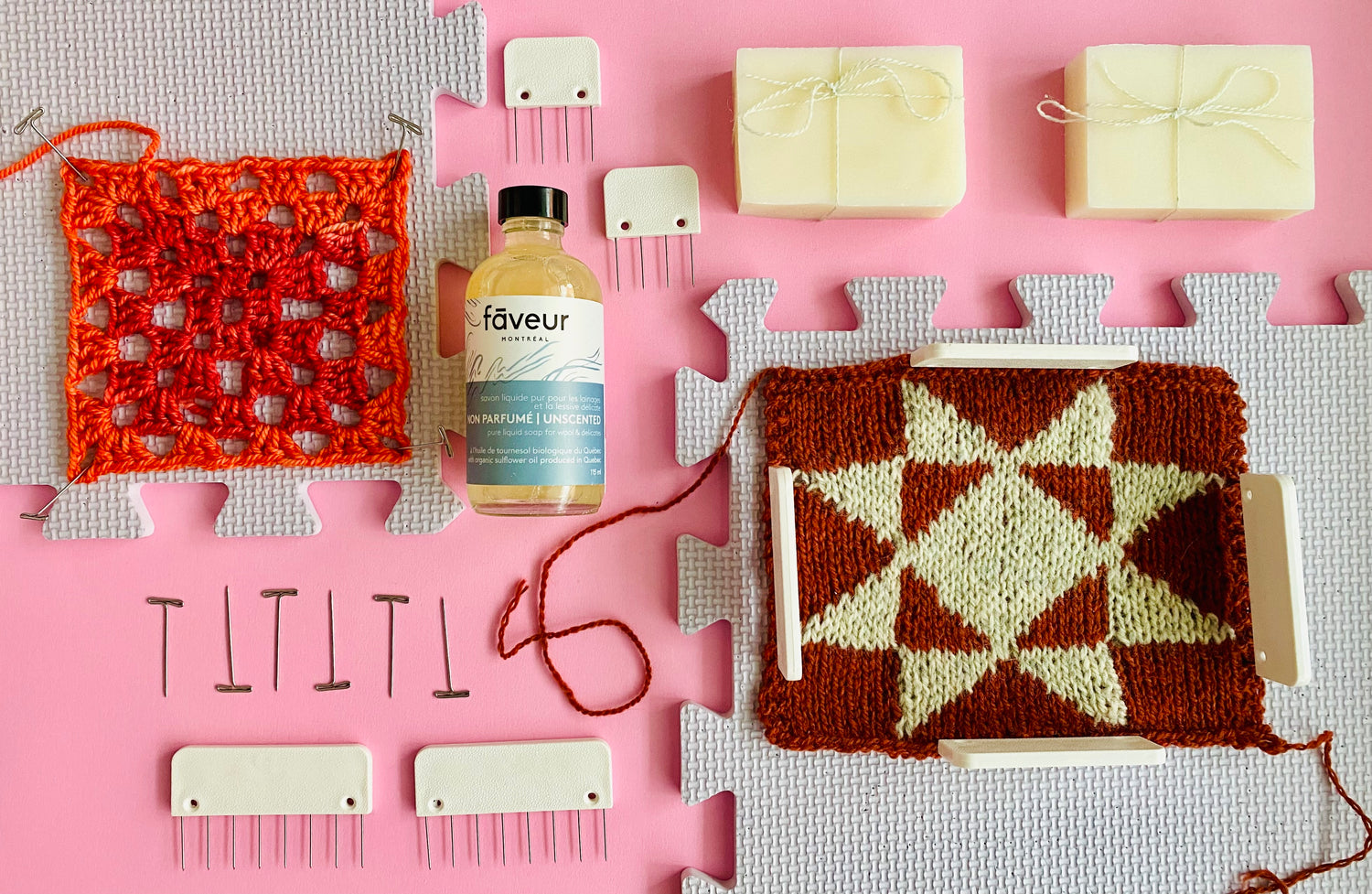It is inevitable that you will have to wash your knitwear eventually, either because you get it dirty, or simply to freshen it up a bit! But you have to do it properly to ensure that it stays beautiful for as long as possible.
The first bath of your knitting should take place as soon as you have cast off the last stitch, before you even wear it. Thinking about how far the yarn you have used has travelled to get to your needles is enough to make you want to give your knitting a good bath, but there is more to it than that! The blocking step should not be skipped because it will allow the stitches to settle, the yarn to spread out, the patterns to take their place and will give you a clear idea of what your knitting will look like once it comes out of the bath so you will avoid any unpleasant surprises when you have to wash it.
Washing a knit is simple. All it takes is a quick soaking session:
-
First, fill a large sink or bath with warm water, at room temperature. The worst enemy of natural wool is thermal shock, so we don't want the water to be too cold (like the water from the pipes during the Quebec winter!) or too hot.
-
Add a small capful of delicate laundry soap like those from Faveur Montreal . If using the bar version, lather a small amount on your hands under running water and dilute in water. Stir the water to mix well.
-
Place your knitting in the soapy water and squeeze the knitting gently to wet it well. Let it soak for 20-30 minutes.
-
Remove the soapy water and refill the sink with clean, warm water. Place the knitwear back in the sink and squeeze it gently to rinse off the soap.
When your knitting is all clean, remove it from the sink and remove the excess water by squeezing it in your hands. DO NOT WRING.
Then roll the knitting in a large, absorbent towel to remove as much water as possible.
Shape and dry
Spread on foam blocks and give shape to the knitting. You can stretch or place the knitting so that it obtains the expected dimensions according to the pattern.
It may be necessary to pin or to use combs or cables when the knitting is made up of lace patterns or if it needs to be given a particular shape (as for a shawl for example).
For sweaters, a pop-up dryer can be used in place of foam blocks if pinning is not required.
Avoid drying your knits hanging on a hanger. The weight of the fibers will cause your clothes to stretch and they will lose their shape.
What about machine washing?
Some yarns will state on the label that they can be machine washed. Typically, these are either plant-based, synthetic, or treated (Superwash) fibers to prevent felting.
If you choose to machine wash your knits, use the delicate cycle and be sure to place them in a mesh bag or pillowcase to avoid catching a stitch in a zipper!
Also, be sure to set the water temperature settings to "lukewarm" to avoid any unpleasant surprises.
Avoid the dryer!
The dryer is not a friend to knits and should be avoided at all costs.









